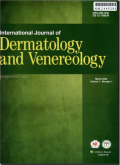Efficacy and Tolerability of 0.1 % Adapalene With 1% Clindamycin Versus 0.1% Adapalene With 2.5% Benzoyl Peroxide on Acne Vulgaris: A Case Control Study
Objective::Combination therapy is currently the preferred acne treatment. We conducted this study to compare the efficacy and tolerability of 0.1% adapalene with 1% clindamycin versus 0.1% adapalene with 2.5% benzoyl peroxide (BPO) in the treatment of acne vulgaris.Methods::This study was conducted over a period of 1 year from September 2014 to September 2015. One-hundred patients aged 14 to 30 years with mild to moderate acne vulgaris were included. The patients were randomly allocated to 2 equal groups (
n = 50 in each group), and received a topical combination of 0.1% adapalene with 1% clindamycin andtopical combination of 0.1% adapalene with 2.5% BPO, respectively). The efficacy and tolerability of two treatments were compared. The unpaired student
t test was used to compare the difference in continuous variables between 2 groups, while the chi-square test or Fisher exact test was used for categorical variables.
Results::One-hundred patients with mild to moderate acne vulgaris were randomly allocated to 2 equal groups (
n = 50 in each group). After 12 weeks of treatment, there were no significant differences between the adapalene-clindamycin and adapalene-BPO in the mean reductions in the numbers of non-inflammatory lesions (11.16±8.01 and 11.12±8.62, respectively), inflammatory papules (49.78±37.57 and 50.48±36.57, respectively), and total lesions (67.50±44.59 and 70.12±46.83, respectively). The incidence of a burning sensation was significantly greater in the adapalene-BPO group than the adapalene-clindamycin group (32%
vs. 6%;
P = 0.002).
Conclusion::Topical adapalene plus clindamycin and adapalene plus BPO had similar efficacies in the treatment of acne. Adapalene with clindamycin was better tolerated than adapalene with BPO.
acne、adapalene、clindamycin、benzoyl peroxide
06
2023-05-30(万方平台首次上网日期,不代表论文的发表时间)
共5页
20-24






